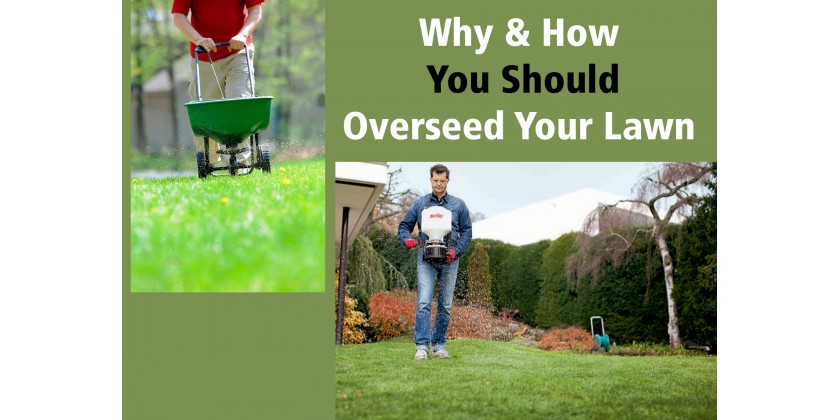
Overseeding is the process of planting grass seeds onto existing turf and is great for rejuvenating turf after a hot summer or for transitioning your lawn into a different grass type. Your geographic location and grass type will determine what time of the year you need to overseed, but fall and spring are usually the best times to overseed. Location is a major consideration when deciding the right time to overseed. If you live further north, late summer or early fall is the best time for overseeing, but if you live in the south, you can wait until later in the fall but not too late. Early fall is overall a good time.
HOW TO OVERSEED YOUR LAWN?
Step 1: Mow your lawn
Mow grass shorter than usual, at approximately 1.5-2 inches. This is the only time you should mow this short. Cutting to this length allows for greater seed-to-soil contact and allows grass to establish strong roots for several weeks before grass needs to be mowed. Remember to bag, blow, or rake grass clippings from your lawn.
Step 2: Dethatch and Pick up clippings
Thatch is the layer of dead grass and organic material on top of your soil. Check your lawn for any thatch or dead grass build-up. If you see build-up greater than an inch, you’ll need to dethatch your lawn. You can dethatch with a manual or power rake, depending on how much thatch is in your yard.
Step 3: Water & Aerate your lawn
Aeration is the process of perforating small holes into compacted soil to allow water, nutrients, and air to penetrate the soil. In the absence of rain, lightly water your lawn prior to aerating. The ground should be slightly moist but not wet. You have the option to aerate manually or with power equipment. Flag all sprinkler heads, valve box covers, shallow electrical lines, water piles, or water drainage pipes and/or any other sub-surface objects. The flags should be placed directly on top of the object.
Step 4: Spread seeds
After aeration, you’re now ready to spread your grass seeds. The seed bag will contain information about how much seed to spread when overseeding. There are several ways to spread seeds. If you’re covering a small area or the sides of flower beds, you can use your hand to spread seeds evenly. However, a spreader is an excellent tool for overseeding because of its ability to spread seeds evenly. There are a variety of spreaders you can use to spread seeds. When choosing a spreader, consider the size and terrain of your lawn. Chest-mount spreaders are ideal for irregular terrain or smaller yards.
GRASS TYPE
What about grass type? The type of grass seeds you pick depends on location and weather. You’ll need to consider the impact of the weather on your lawn throughout the year. If you live in the south, you’ll want to pick grass that’s better able to withstand heat. If you live in the north, most cool-season grasses will thrive.
AFTER OVERSEEDING
Light, frequent watering is best for seedlings. Soil should remain damp to the touch over the next 21-28 days. Remove fallen leaves as soon as possible. If leaves remain on the turf more than three days, the turf will suffer. The best method for removing leaves is with an air blower, however, if you use a rake be careful not to pull up grass seedlings.
Cut watering back after new seedlings have reached 2 inches in height. When they are 2 inches tall, watering can be cut back to once a day. Do not mow your lawn until grass reaches a height of 4.5 inches. Be patient: germination can take 21 days or longer. Keep watering during this time. Seedlings are very prone to drying out and dying because they are not rooted into the soil.
Overall, overseeding is an excellent option for reinvigorating your lawn without removing turf. You can have a lush and vibrant lawn by overseeding your yard.
